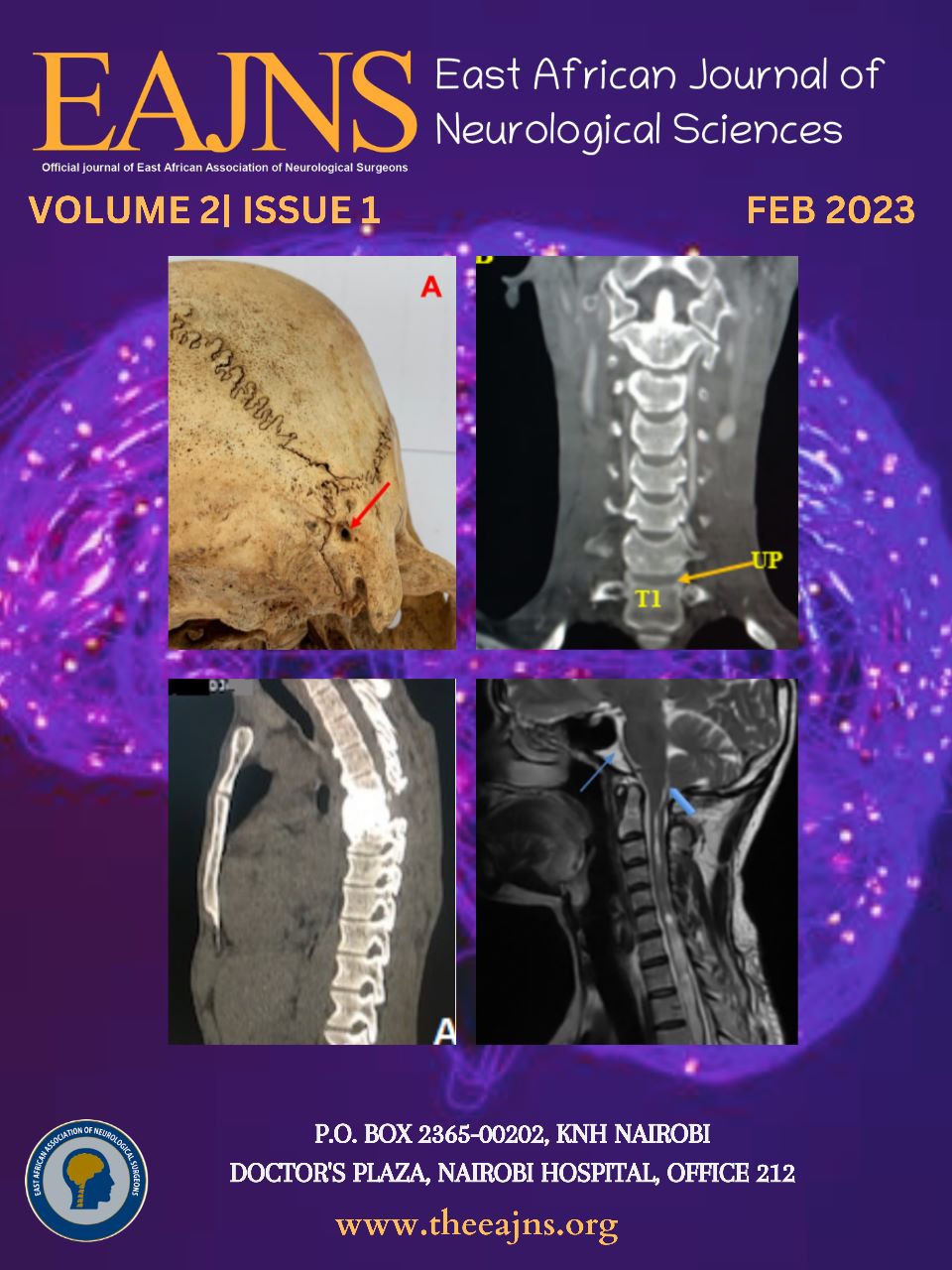Main Article Content
Mastoid emissary foramina and their surgical relevance: An African osteological study
Abstract
Background: The mastoid emissary vein (MEV) is a small venous channel connecting intracranial and extracranial venous systems. It travels in the mastoid foramen and usually occurs singly or multiply. Recognition of MEVs during neurosurgery is essential to avoid haemorrhage or thromboembolism of the sigmoid sinus. Data on their characterization and occurrence in the African setting still remains scarce. This study aimed to assess the prevalence of these foramina and shed light on their significance in neurosurgery. Methods: This descriptive cross-sectional study was conducted on 105 dry sexed skulls obtained from the National Museums of Kenya. The mastoid bones were examined for the number of mastoid foramina and the relative distances of each foramen to the asterion and tip of the mastoid process. Distances were recorded by use of a digital Vernier calliper (precision of 0.01mm) and data were analysed using SPSS (version 26.0). Results: Mastoid emissary foramina were observed in 80 skulls on the right side (88.1%) skulls and in 76 (86.2%) skulls on the left. The mean distance to the asterion was 21.09 6.74 mm and 28.56 5.81 mm to the tip of the mastoid process. Conclusion: The mastoid emissary foramina which represent channels of MEVs are relatively constant structures in African skulls. Neurosurgeons should take caution given their high prevalence and approximate locations using the findings in this study to prevent haemorrhage or thromboembolism.







